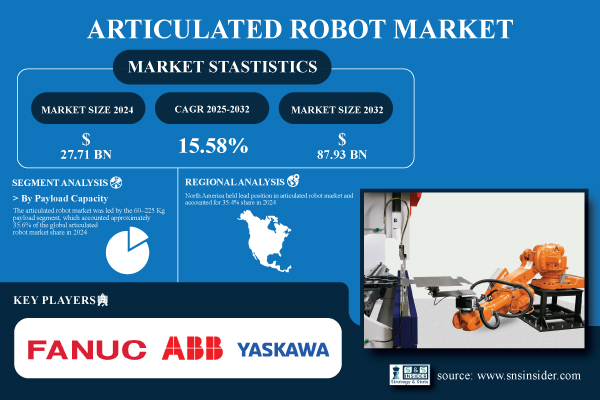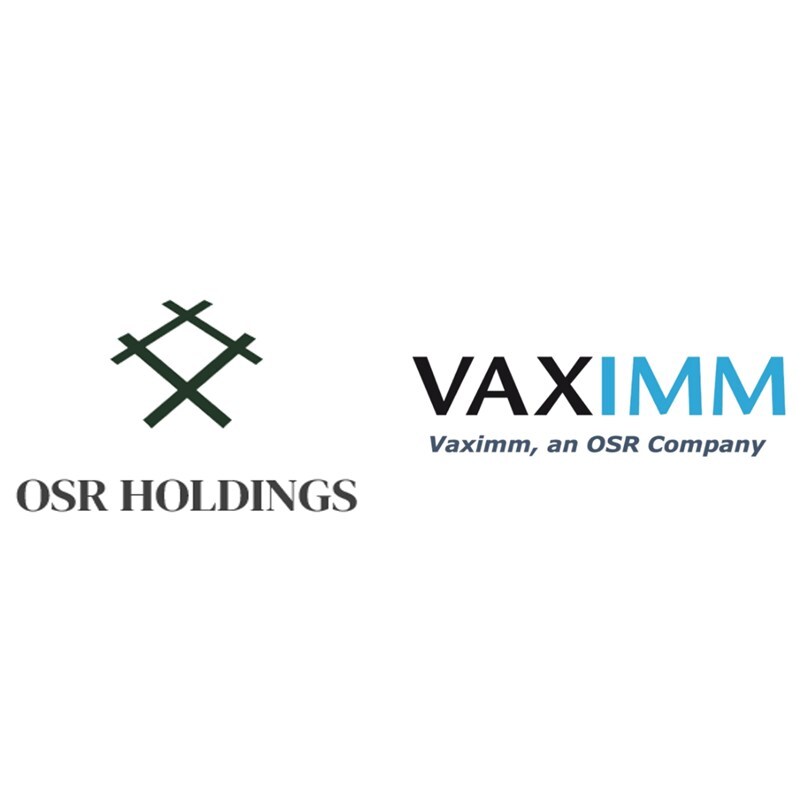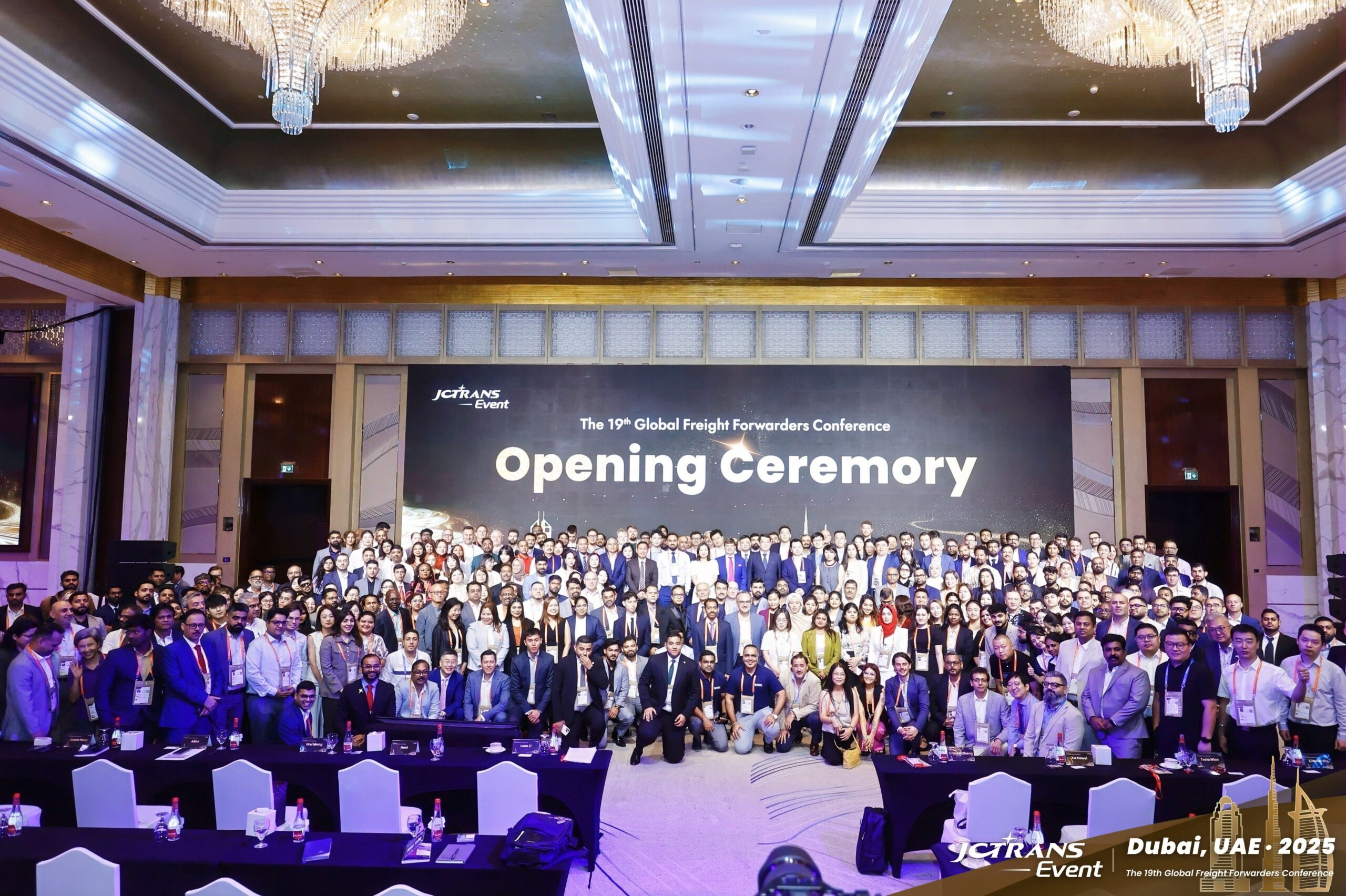Articulated Robot Market Set to Surge to USD 87.93 Billion by 2032

The articulated robot market is on a trajectory for significant growth, projected to expand from a valuation of USD 27.71 billion in 2024 to USD 87.93 billion by 2032. This surge represents a compound annual growth rate (CAGR) of 15.58% from 2025 to 2032, according to a report by SNS Insider. The increasing integration of automation and artificial intelligence (AI) across various sectors is driving this expansion.
Automation and AI are not just trends; they are reshaping the landscape of manufacturing, particularly in industries such as automotive, electronics, pharmaceuticals, and metalworking. Companies are increasingly deploying articulated robots to improve productivity, precision, and safety, addressing challenges such as labor shortages and rising wage costs. The implementation of AI, Internet of Things (IoT), and machine learning technologies is enhancing robot reliability, allowing for real-time feedback and predictive maintenance.
Key Drivers of Growth in the Articulated Robot Market
Collaborative articulated robots, commonly known as cobots, are gaining popularity, particularly among small and medium-sized enterprises (SMEs) and in the pharmaceutical sector. Their design prioritizes safety and user-friendliness, making them suitable for a wide range of applications. The efficiency gains from AI-enabled robotics are notable, with improvements of 25% to 40% in operational efficiency and significant reductions in defects, downtime, and waste. These advancements firmly establish articulated robots as essential components in the transition to Industry 4.0.
The market is segmented by payload capacity, function, industry vertical, and component. In 2024, the segment for robots with a payload capacity of 60–225 kg led the market, holding a 35.6% share. This segment is driven by the extensive use of heavy-duty applications in automotive and industrial machinery, where power and range are critical for tasks like welding and material handling. Meanwhile, the segment for robots with a payload of up to 16 kg is anticipated to exhibit the fastest growth from 2025 to 2032, fueled by increasing demand in electronics and food and beverage sectors.
Market Segment Insights and Regional Outlook
By function, welding remains the dominant segment, capturing 31.5% of the market share in 2024. This is largely due to its crucial role in the automotive and metalworking industries, ensuring consistent quality in high-volume production. The dispensing segment is expected to witness the highest growth over the forecast period, driven by needs in sectors such as electronics and pharmaceuticals.
Regionally, North America led the articulated robot market in 2024 with a 35.4% share, supported by robust automation adoption in various industries. The United States continues to be a key contributor, bolstered by incentives for reshoring and investments in smart factories. The Asia-Pacific region is projected to grow at the fastest rate, with a CAGR of 16.45% from 2025 to 2032. This growth is attributed to rapid industrialization, labor shortages, and supportive government initiatives aimed at advancing Industry 4.0, with China emerging as a dominant force due to significant investments and a strong base of local manufacturers.
In Europe, the market remains stable, driven by sophisticated manufacturing processes and a focus on sustainability. Meanwhile, Latin America and the Middle East & Africa are also experiencing steady growth, spurred by industrialization and infrastructure improvements.
Recent developments in the market highlight the ongoing innovation among leading players. For instance, in May 2024, ABB launched the new IRB 7710 and IRB 7720 robots, introducing 16 variants to its modular large robot portfolio, designed for payloads between 70 kg and 620 kg. These robots are tailored for automotive, electric vehicle, logistics, and high-precision manufacturing applications, demonstrating the commitment of major companies to advancing robotic technology.
In conclusion, the articulated robot market appears poised for remarkable growth, driven by technological advancements and increasing demand across diverse sectors. As companies continue to embrace automation and AI, articulated robots are set to play a pivotal role in shaping the future of manufacturing.






